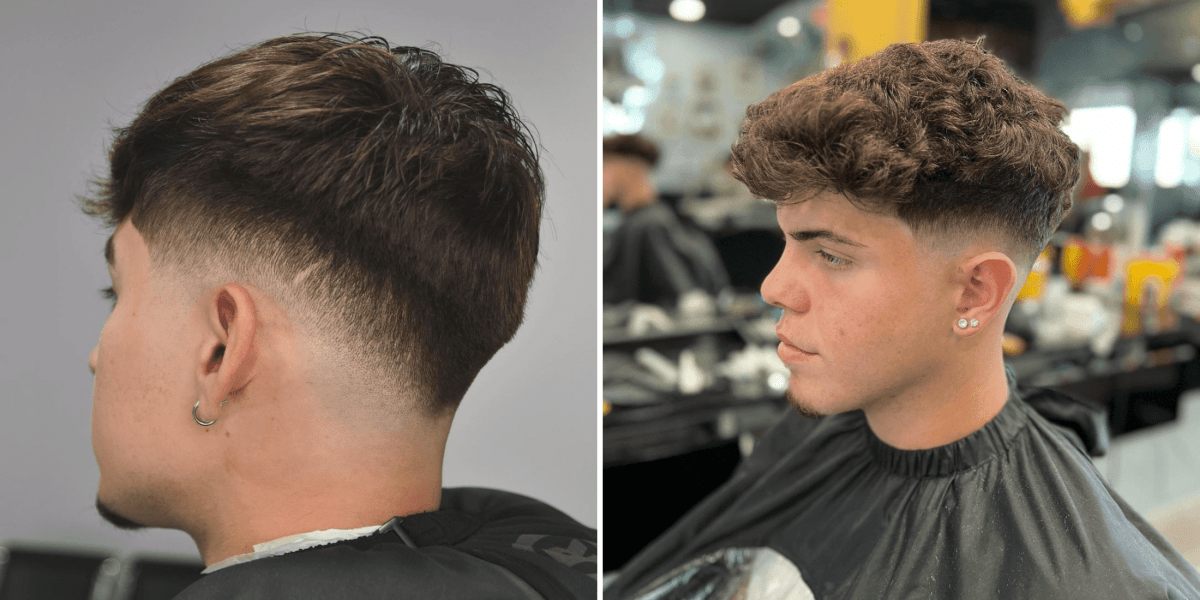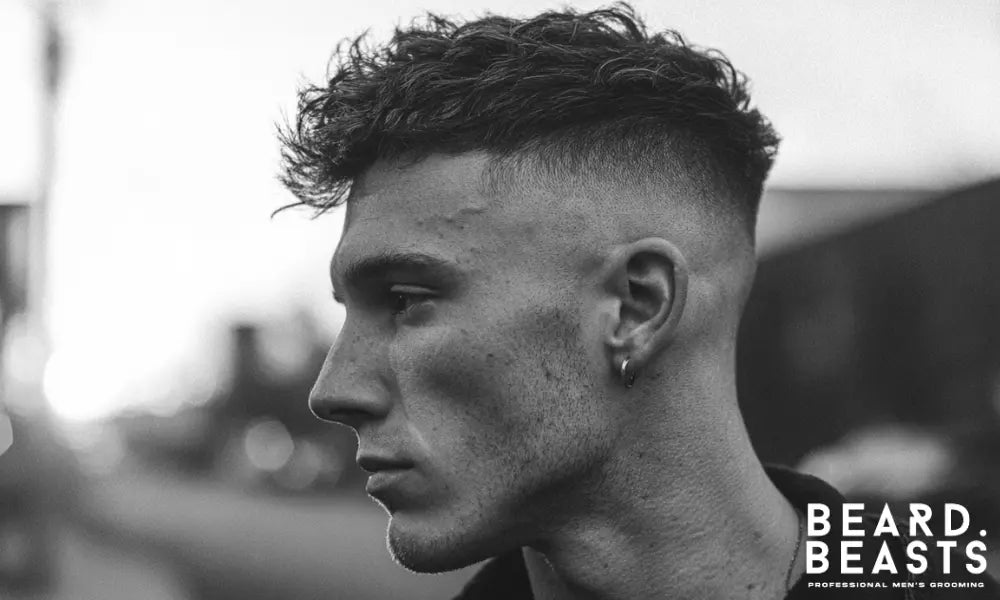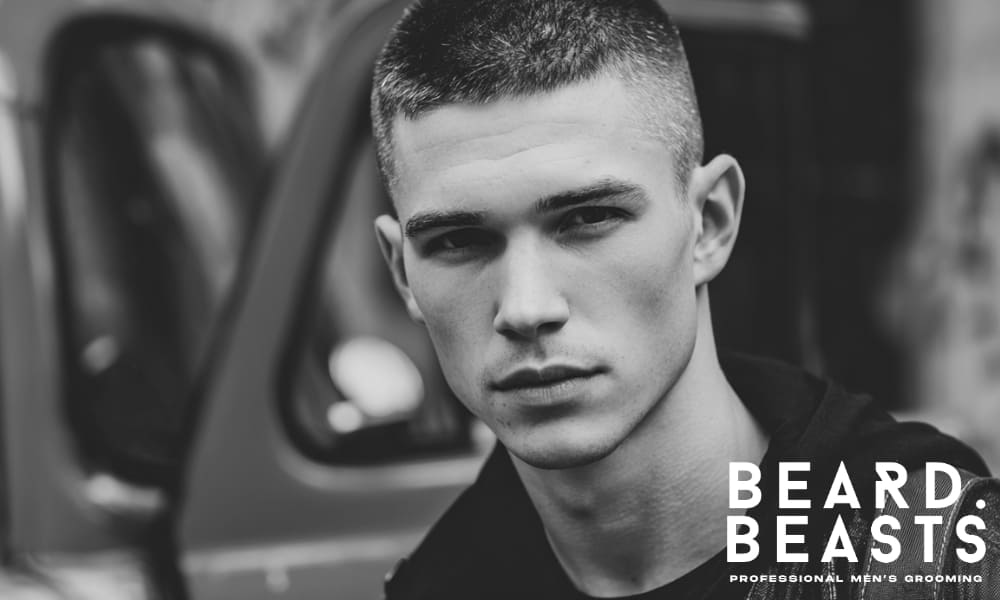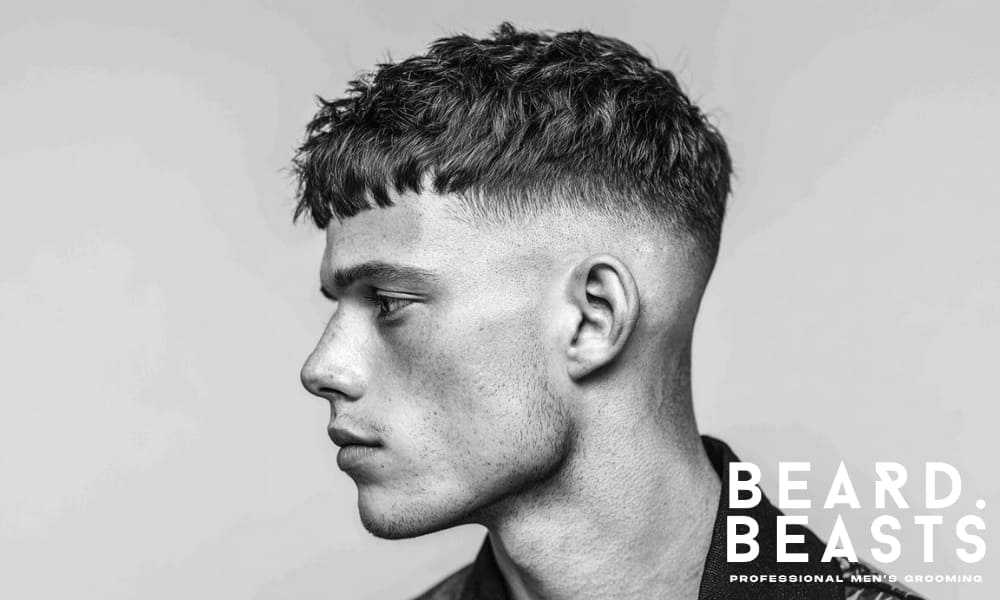Thinking about switching up your haircut but stuck between a drop fade vs low fade? You’re not alone.
Both styles are clean, stylish, and wildly popular — but they offer very different vibes. One’s bold and sculpted; the other’s subtle and classic. And choosing the right one can completely transform how you look and feel.
In this guide, we’ll break down the real difference between a drop fade and a low fade, what works best for your hair type and face shape, and how to pick the perfect one for your lifestyle.
Drop Fade vs Low Fade: Key Differences That Matter
Choosing between a drop fade and a low fade comes down to the details.
Both look sharp — but they change the shape, vibe, and maintenance of your haircut in totally different ways.
Here’s what really sets them apart:
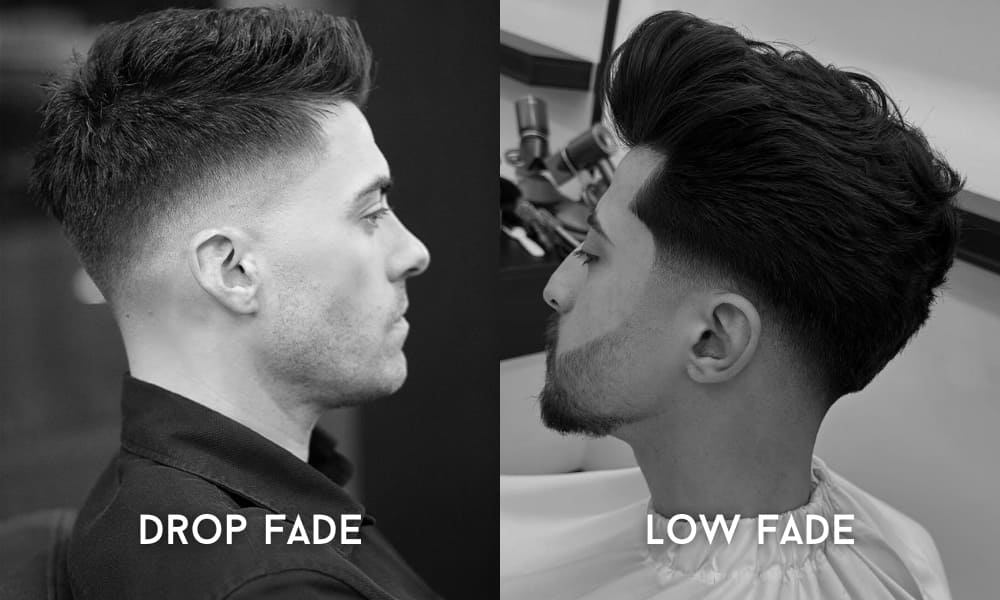
Silhouette & Profile
- Drop Fade: Follows the natural curve of your head, dipping low behind the ears. This adds more contour to your profile and emphasizes the back of your head for a sculpted, dimensional shape.
- Low Fade: Keeps the fade low and even all the way around. It hugs the bottom of the hairline for a flatter silhouette — clean, subtle, and universally flattering.
Overall Boldness
- Drop Fade: Has a more dramatic fade line, especially from the side and back. It adds edge and instantly makes your haircut stand out.
- Low Fade: Offers a gentler blend with less contrast. It’s subtle and understated, perfect for classic cuts or professional settings.
Blend Transition
- Drop Fade: More contrast between top and sides. You’ll usually see a stronger visual shift, which adds definition but may need more styling to blend.
- Low Fade: The transition is soft and natural. It flows seamlessly from top to bottom, giving it a cleaner, low-maintenance finish.
Edge Detailing
- Drop Fade: Often paired with sharp lines, designs, or shape-ups around the ears and neckline. This adds extra detail and sharpness to the look.
- Low Fade: Keeps the edges tight and neat without too many add-ons. It’s more about clean lines than flashy extras.
Versatility with Hairstyles
- Drop Fade: Works great with dramatic top styles — think faux hawks, curly tops, or textured crops. The drop fade adds contrast and draws attention upward.
- Low Fade: Blends best with everyday cuts like side parts, slick backs, and short crops. The low fade supports the top without overpowering it.
Maintenance Level
- Drop Fade: Needs more frequent trips to the barber (every 1–2 weeks) to stay fresh, especially around the back and neckline.
- Low Fade: Grows out more evenly. You can go 2–4 weeks between touch-ups without it looking too grown out.
Now that you understand the key differences between a drop fade vs low fade, it’s easier to see how each style brings a different vibe to your overall look.
But choosing the right one isn’t just about contrast or shape — it’s about how well it fits into your lifestyle and daily routine.
Let’s break down the pros and cons next so you can decide which fade truly works for you long-term.
Drop Fade vs Low Fade: Pros and Cons
Now that you’ve seen how these two fades differ in structure and styling, let’s break them down in terms of real-world pros and cons — so you can choose the one that fits your vibe, routine, and goals.
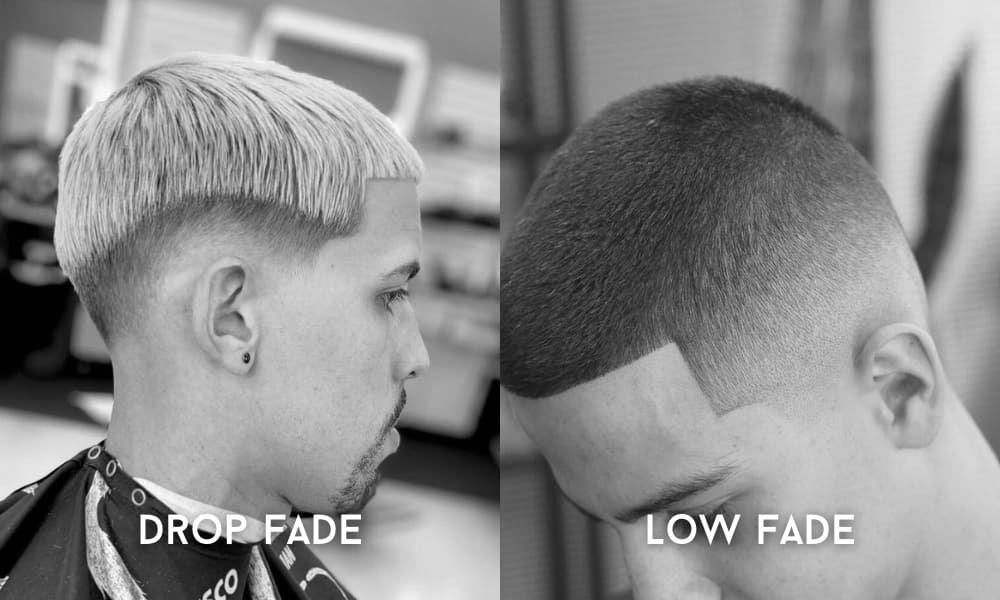
Drop Fade Pros
- Bold, stylish profile: Great if you want a fade that turns heads and feels modern.
- Ideal for expressive styling: Pairs well with creative cuts, sharp lines, or even hair tattoos.
- Enhances volume: Gives more contrast up top, making styles like quiffs, crops, and curls stand out.
- Works well with thicker or textured hair: Helps tame the sides without losing character up top.
Drop Fade Cons
- More maintenance: Needs frequent barber visits (every 1–2 weeks) to stay sharp.
- Not ideal for minimalists: If you prefer low-effort grooming, this might feel like too much upkeep.
- Can grow out unevenly: The curved fade line means regrowth can get patchy without trims.
Low Fade Pros
- Clean and classic: Low-key but polished, perfect for everything from the office to the weekend.
- Low maintenance: Grows out smoothly, and touch-ups can be spaced further apart.
- Great for subtle style upgrades: A smart way to refresh your look without going too bold.
- Blends with any hairstyle: Works with side parts, textured tops, slick backs — the works.
Low Fade Cons
- Not as dramatic: If you’re chasing bold contrast, the low fade might feel too safe.
- Less edge for thicker hair: Doesn’t remove as much bulk, so thick or curly hair may need extra styling help.
- Limited creativity: There’s less surface area for design work or detailing.
If you love sharp contrast, bold shapes, and regular barbershop visits, go for the drop fade. But if you want something versatile, understated, and low effort, the low fade is your winner.
Choosing the perfect fade isn’t just about style though — it’s about finding a cut that suits your face shape, works with your hair type, and fits your day-to-day life.
How to Choose the Right Fade for You
When it comes to deciding between a drop fade vs low fade, your face shape, hair type, and lifestyle all play a major role in picking the style that fits you best.
This quick guide will help you make the smartest choice — one that complements your natural features and fits your day-to-day vibe.
Best Fade for Your Face Shape
Matching the right fade to your face shape can level up your whole look. Here’s what works best:
- Oval Face: You’ve got the most flexibility — both the drop fade and low fade suit you well. Go with the one that matches your style best.
- Round Face: A drop fade adds definition and visual length, helping to sharpen your overall look.
- Square Face: A low fade highlights your strong jawline and sharp features. Prefer drama? A drop fade works too — just keep the top structured.
- Heart Face: A low fade balances a wide forehead and narrow chin, creating a more symmetrical feel.
- Long Face: A low fade is your best friend — it draws attention to the sides instead of elongating your features even more.
Best Fade for Your Hair Type
Not every fade works with every texture — here’s how to match yours:
- Curly or Wavy Hair: A drop fade adds structure and frames your natural curls with a clean shape.
- Straight Hair: Go for a low fade — it delivers a crisp, smooth finish with minimal styling required.
- Thick Hair: A drop fade helps reduce bulk on the sides while keeping the top full and manageable.
- Fine or Thin Hair: A low fade adds subtle volume, giving your hair more body without overwhelming your natural texture.
Maintenance and Lifestyle
Your routine matters just as much as your hair type. Here’s how to match your fade to your lifestyle:
- High Maintenance Preference: Like regular trims and detailed styling? A drop fade gives you a bold, fresh look — but it needs more upkeep.
- Low Maintenance Lifestyle: A low fade is easy to manage and forgiving as it grows out, making it ideal for busy schedules.
- Active or On-the-Go: The clean, subtle profile of a low fade holds up better in fast-paced routines — less maintenance, more flexibility.
There’s no universal winner in the drop fade vs low fade debate — just the one that works for you.
Think about your face shape, hair texture, and how often you want to visit your barber.
And if in doubt? Bring in a photo and ask your barber’s advice — they’ve got the expert eye to make it work.
Popular Drop Fade and Low Fade Haircuts
Let’s explore the most popular drop fade and low fade variations trending right now — built to fit your hair type, personality, and lifestyle.
Textured Crop Drop Fade
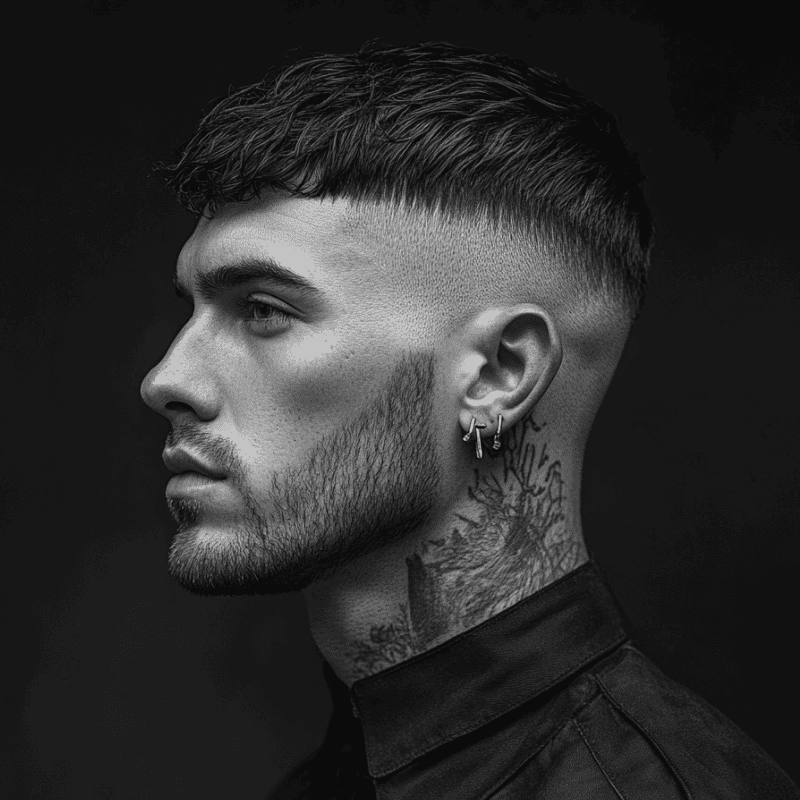
Short, stylish, and packed with personality. The drop fade adds contour to the sides while the textured crop keeps things sharp on top. This look works great on thick or wavy hair and is perfect if you like a laid-back, modern cut.
Low Fade with Side Part
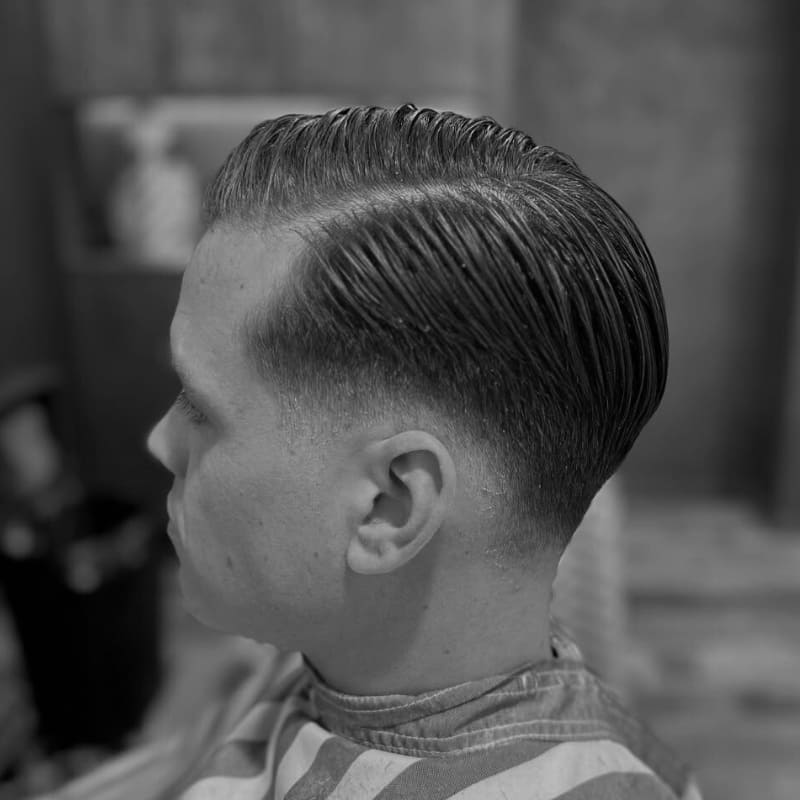
Clean and classic with a sharp twist. The low fade keeps the edges neat while the side part adds structure and polish to your overall look. It’s ideal for guys who want something professional but still cool.
Curly Drop Fade
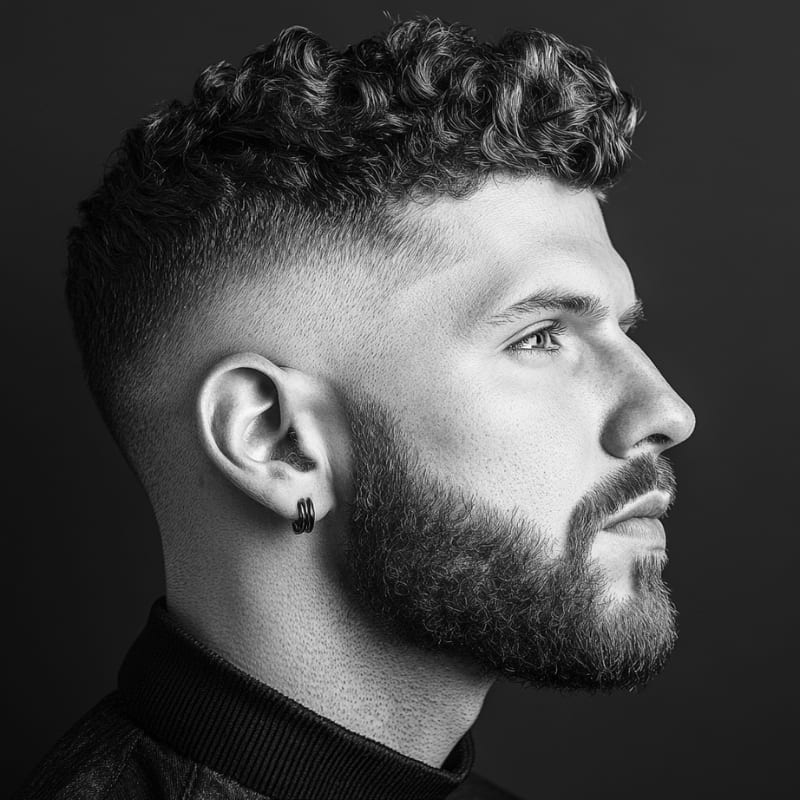
Let your curls shine with a drop fade that adds definition and shape. This combo brings out natural texture while keeping the sides sharp and clean. Great for showing off volume without going over the top.
Buzz Cut Low Fade
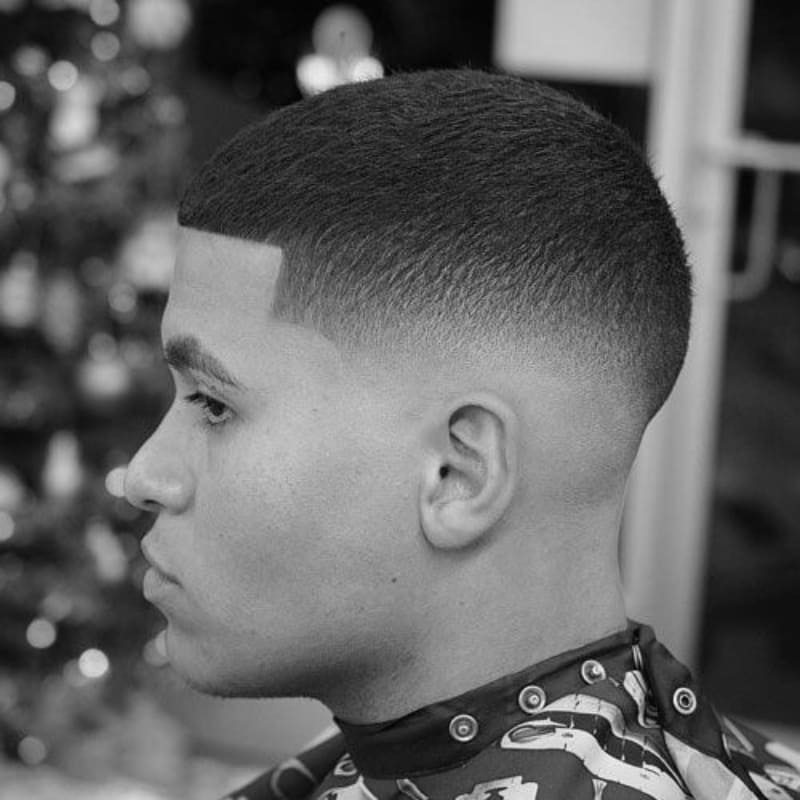
Ultra low-maintenance, ultra sharp. The low fade gives this buzz cut a modern edge, fading smoothly into the skin for a fresh, clean look. It’s no-fuss and perfect if you want something simple but stylish.
Pompadour Drop Fade
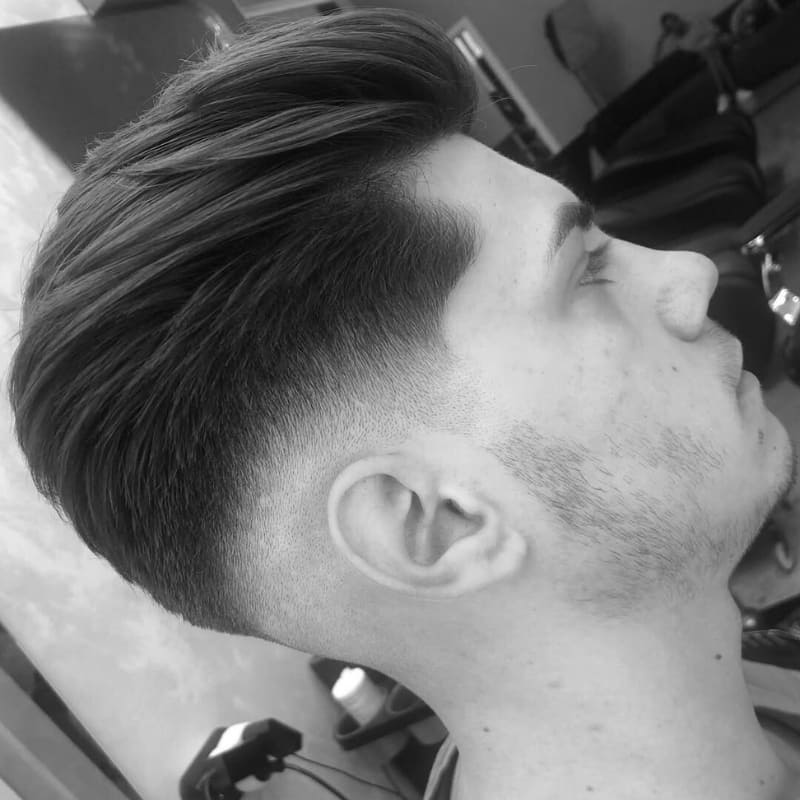
Classic meets contemporary. The voluminous pompadour brings height and style, while the drop fade hugs the head for a sleek finish. This cut is made for guys who like statement styles with a tailored edge.
Slick Back Low Fade
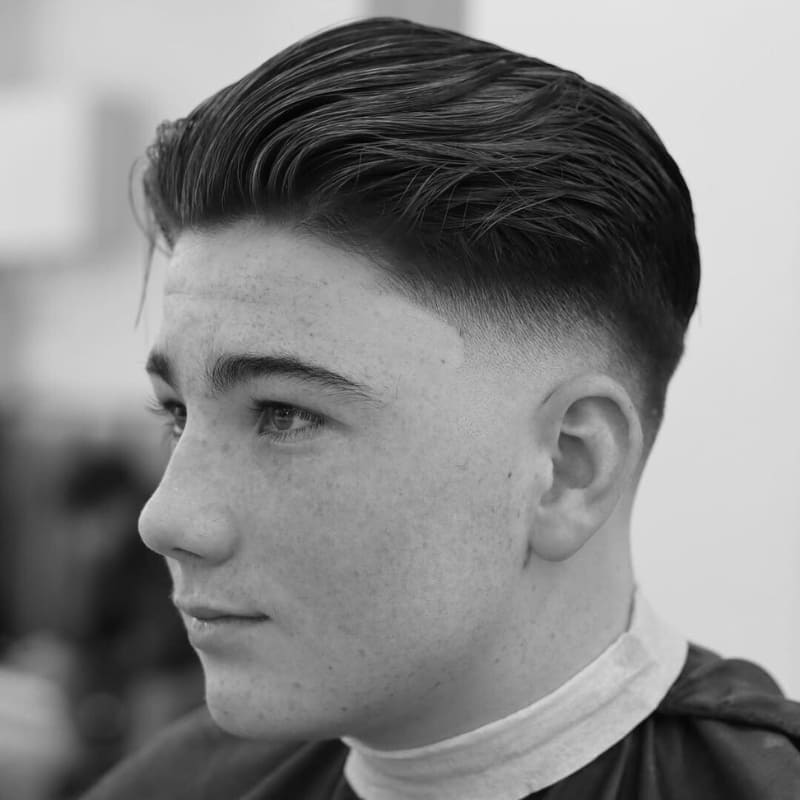
Polished and confident. The slicked-back top keeps it smooth, while the low fade ensures a clean, gradual taper. It’s a go-to for anyone wanting a refined style that’s work- and weekend-friendly.
Drop Fade Faux Hawk
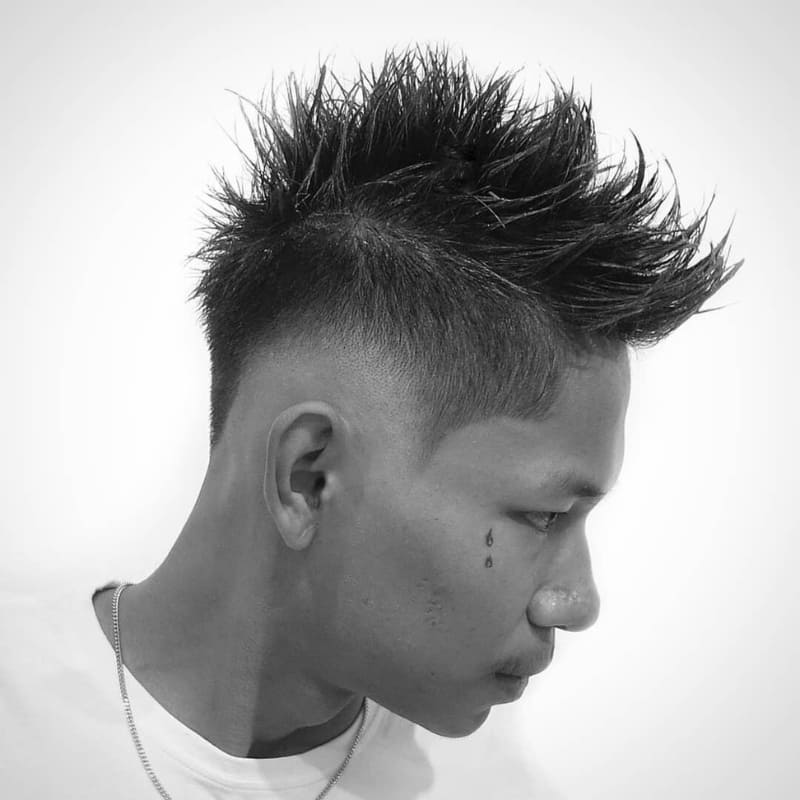
High energy, high style. The faux hawk brings attitude up top, while the drop fade curves and shapes the sides to keep things tight. This one’s for guys who like bold, edgy cuts that still look sharp.
Whether you go for a bold drop fade or a clean low fade, the right variation helps express your personal style while keeping your haircut fresh and intentional.
Conclusion: Drop Fade vs Low Fade
When choosing between a drop fade vs low fade, it really comes down to how bold or subtle you want your style to be.
If you’re after something sharp and modern with added edge, go for the drop fade. Prefer something low-maintenance, timeless, and clean? The low fade is your move.
Both are versatile, stylish, and easy to tailor to your hair and lifestyle. Whatever you choose, you’re set to upgrade your look with confidence.
Not sure if either one is your perfect match? Check out our full Guide to the Different Types of Fade Haircuts to explore more fade styles that might suit your vibe even better.

